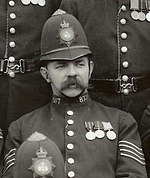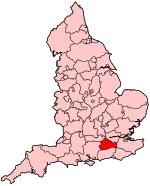Laine Theatre Arts
Laine Theatre Arts, sometimes referred to as Laines, is an independent performing arts college, based in the town of Epsom in Surrey, England. The college was founded in 1974 by former professional dancer and dance teacher Betty Laine OBE, and developed from an earlier school, the Frecker-Laine School of Dancing. It provides specialist vocational training in dance and musical theatre. The college prepares students for a professional career in the performing arts. The college is accredited by the Council for Dance Education and Training and it offers Qualifications and Curriculum Authority recognised qualifications validated by the Trinity College London. Key areas of study include singing, acting and dancing. It was rated "Outstanding" by Ofsted in 2016.
Excerpt from the Wikipedia article Laine Theatre Arts (License: CC BY-SA 3.0, Authors).Laine Theatre Arts
East Street, Epsom and Ewell
Geographical coordinates (GPS) Address External links Nearby Places Show on map
Geographical coordinates (GPS)
| Latitude | Longitude |
|---|---|
| N 51.3348 ° | E -0.2633 ° |
Address
Laine Theatre Arts
East Street
KT17 1HH Epsom and Ewell
England, United Kingdom
Open on Google Maps











